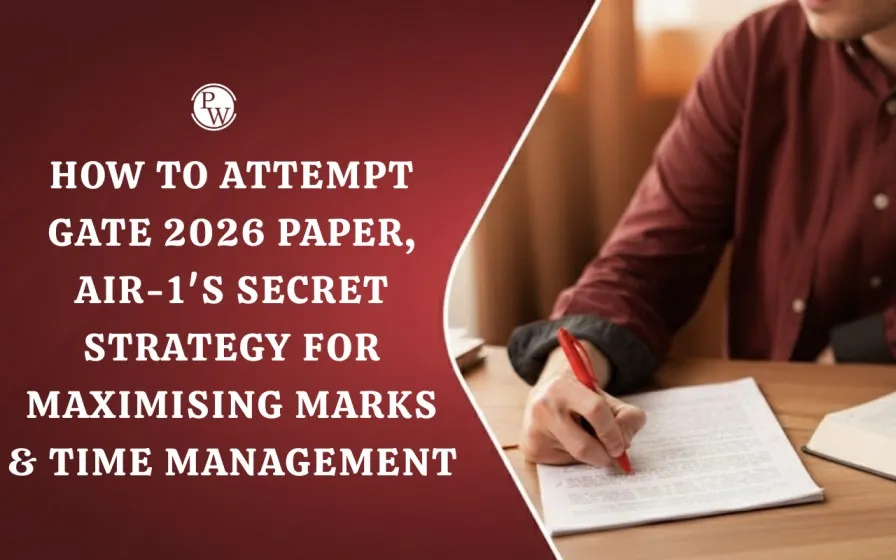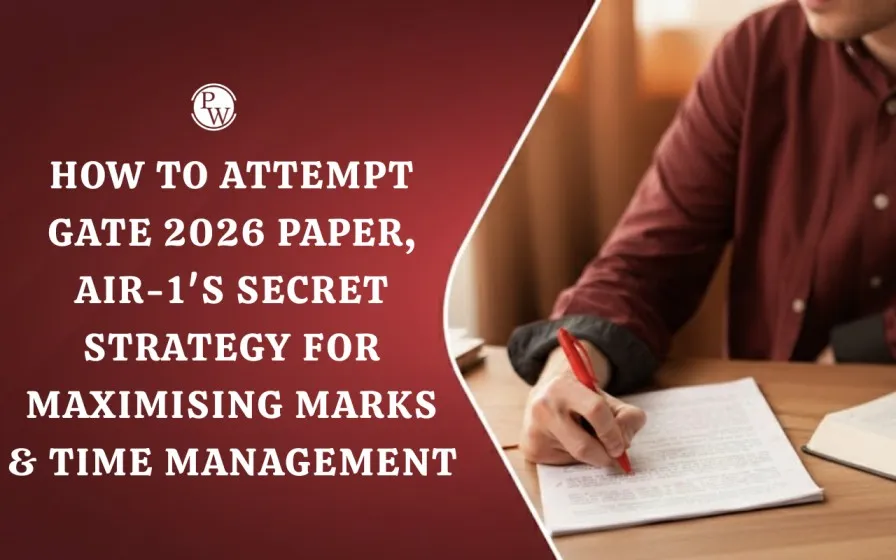

Preparing for the GATE 2026 exam is not just about mastering the syllabus—it’s about how you attempt the paper. In this strategy session, inspired by a topper who secured AIR 1 in GATE 2021 & 2023 (Electronics), we’ll break down a practical process you can apply. Whether you are preparing for CS, EC, Mechanical, or any branch, this approach works universally.
You might have done hours of study and many full-syllabus mocks. But the real difference comes in the exam day strategy—how you manage your time, select questions, and execute answers cleanly. Let us discuss the strategy.
How to Prepare for GATE 2026 Paper Exam?
Cracking the GATE exam 2025 is not only about knowing your concepts—it’s equally about how you handle the exam. The tri-category attempt strategy—Solve Easy first, mark Medium, skip Unseen initially—coupled with neat writing, unit checks, and smart time-management can transform your results.
Practice this method relentlessly in GATE 2026 mock tests. Start your exam day with calm confidence, not desperation or rigid expectations. When you handle the paper smartly, the rank will follow.
1. GATE Exam Format 2025 & Target Setting
-
GATE paper: 65 questions, 3 hours (180 minutes).
-
Questions include 1-mark and 2-mark MCQs and NATs.
-
Approximate target: In tough branches like Electronics/Electrical, a score of ~75-80 often brings a good rank.
-
Key: Don’t go with a rigid target like “I will solve 60 questions”. Set a flexible aim: “I will attempt as many as I can confidently and keep errors minimal.”
2. The Three-Category Question Strategy
When you begin the GATE 2026 paper and open the GATE Question Paper, adopt a quick triage of each question into one of three categories:
| Category | Description |
| Easy | Well-known concept, short solution, confident. |
| Medium-Hard | You recognise the concept, solution is longer and takes time. |
| Unseen/Trap | Concept not seen before or looks complicated; likely time sink. |
Execution Tip:
-
If it’s Easy, solve it immediately.
-
If it’s Medium-Hard, mark it and come back later.
-
If it’s Unseen/Trap, skip for now and revisit only if time permits.
3. Recommended Attempt Workflow
-
Before starting, take the notepad/scratch sheet and draw a vertical line to divide each page. Use only one side of each sheet.
-
For Question 1:
-
Read the question.
-
Immediately classify as Easy / Medium-Hard / Unseen.
-
If Easy → Solve cleanly, check units, write tidy.
-
If Medium-Hard → Mark it, move on.
-
If Unseen/Trap → Leave it, keep moving.
-
Keep a rhythm: focus first ~40 questions which are likely from Easy category. Aim to finish these in roughly 90 minutes (about 2 mins per question).
-
For the next set (~20 questions): these will be Medium-Hard. You might allocate ≈ 60-80 minutes to them.
-
Save the last ~30 mins (or whatever remains) for checking and revisiting marked questions. Avoid starting unseen questions that eat time.
-
After solving each question, spend 15-20 seconds to quickly review:
-
Did I use correct unit?
-
Any sign error or arithmetic mistake?
-
Answer neatly written.
4. Why This Method Works
-
Solving easy questions first builds momentum and confidence, which helps you when you move to tougher ones.
-
Avoiding early time-draining questions prevents panic and “paper fatigue”.
-
Clean solving + quick review reduces silly mistakes (unit errors, sign mistakes).
-
The strategy is applicable across branches—you focus on smart execution, not just more hours.
5. Mindset Before Exam
-
Do not go in with a rigid number target (e.g., “I will do 55 questions”).
-
Accept the fact: If paper is tougher, your target may drop; if it’s easier, you may exceed.
-
Better target: “I will attempt all questions I know with clarity, no panic, minimal errors.”
-
Maintain calm confidence—pressure from high expectations often ruins performance.
